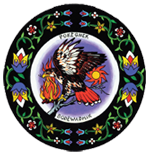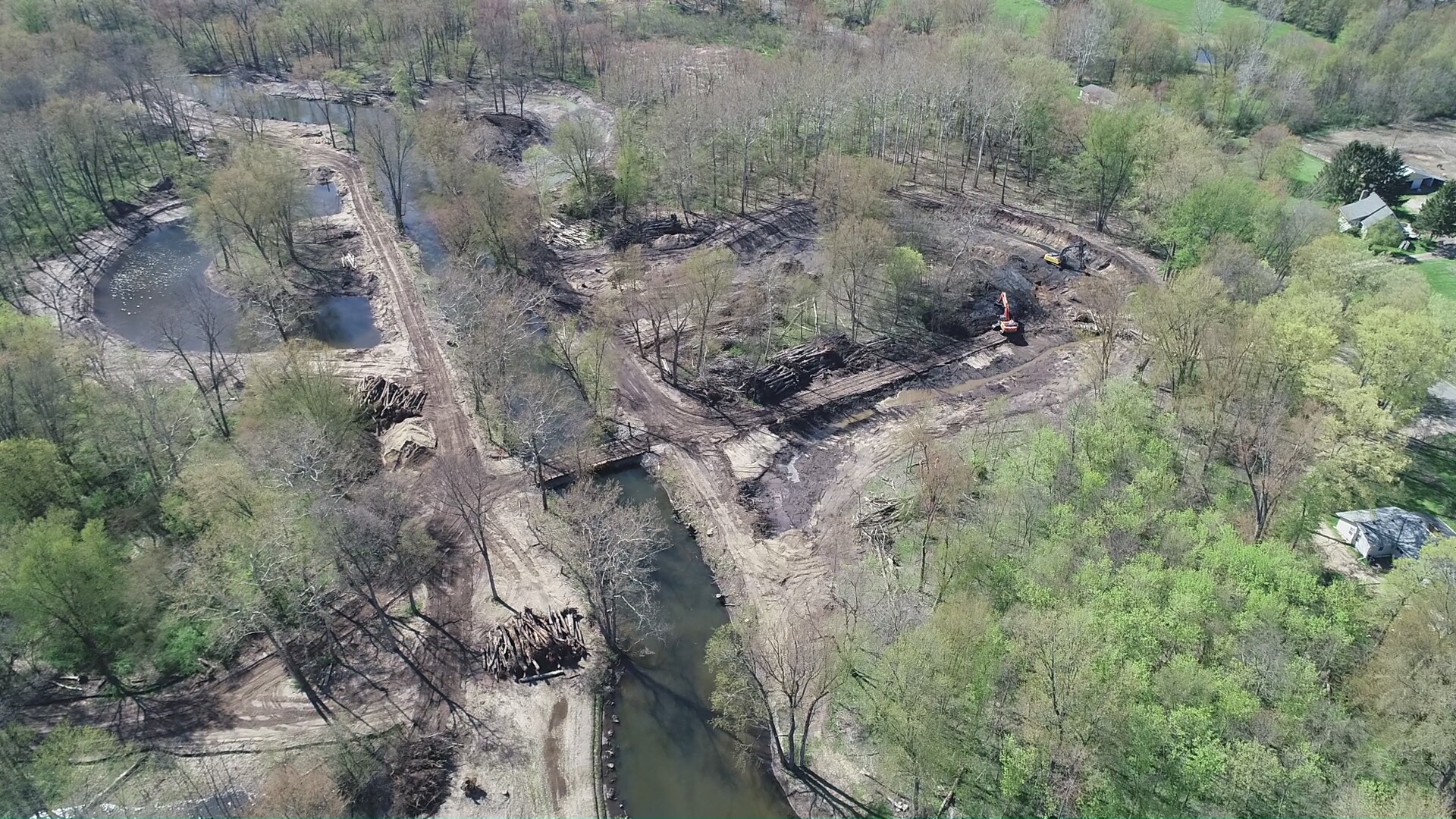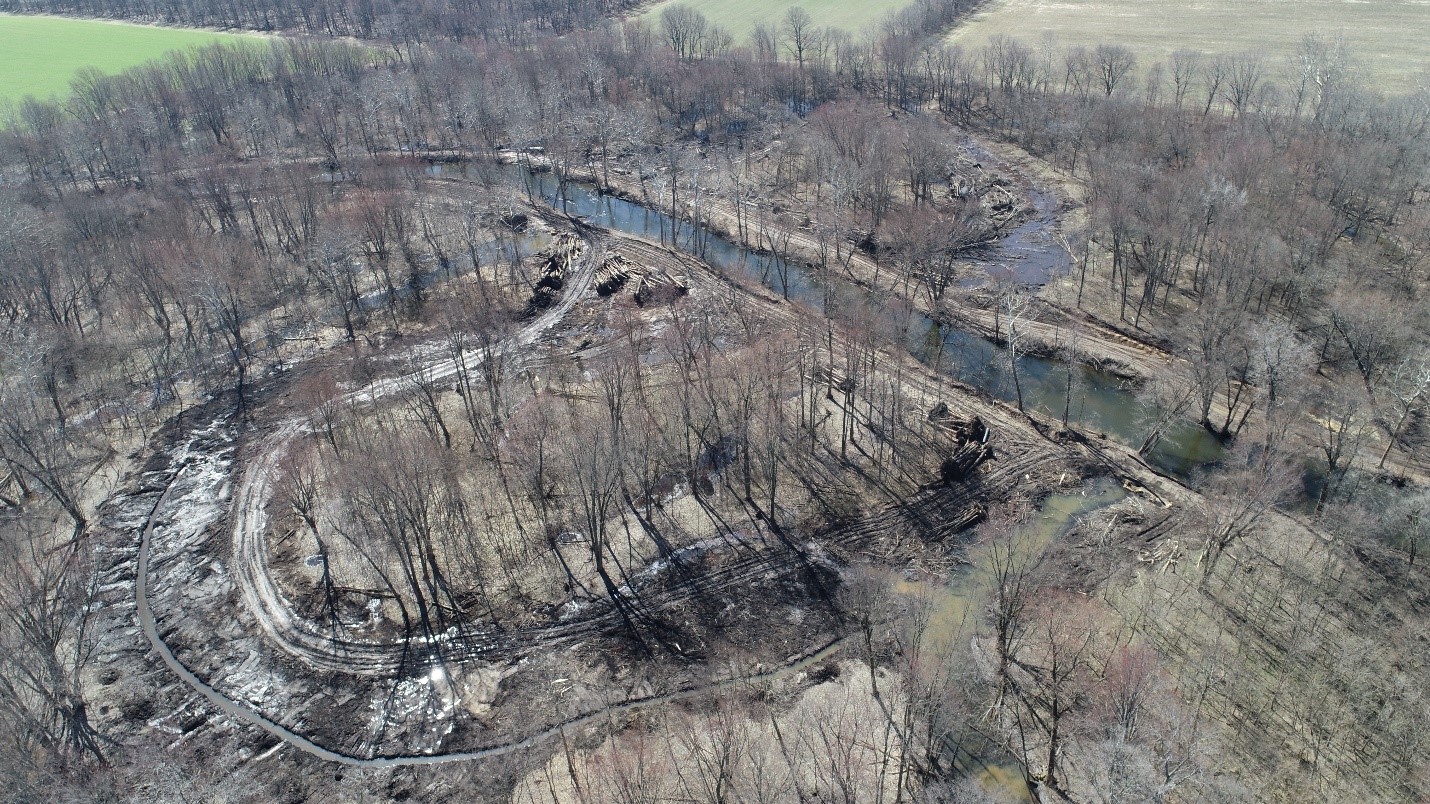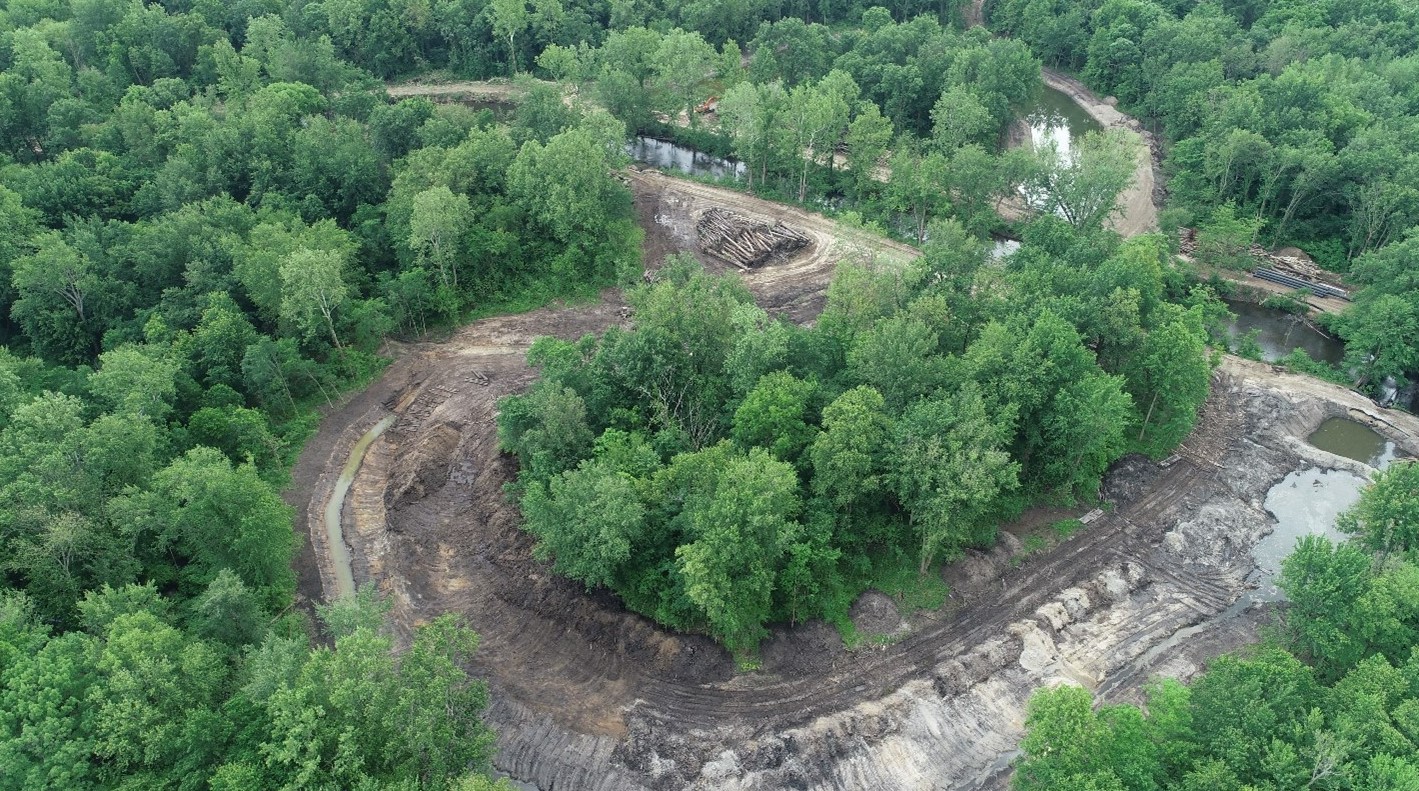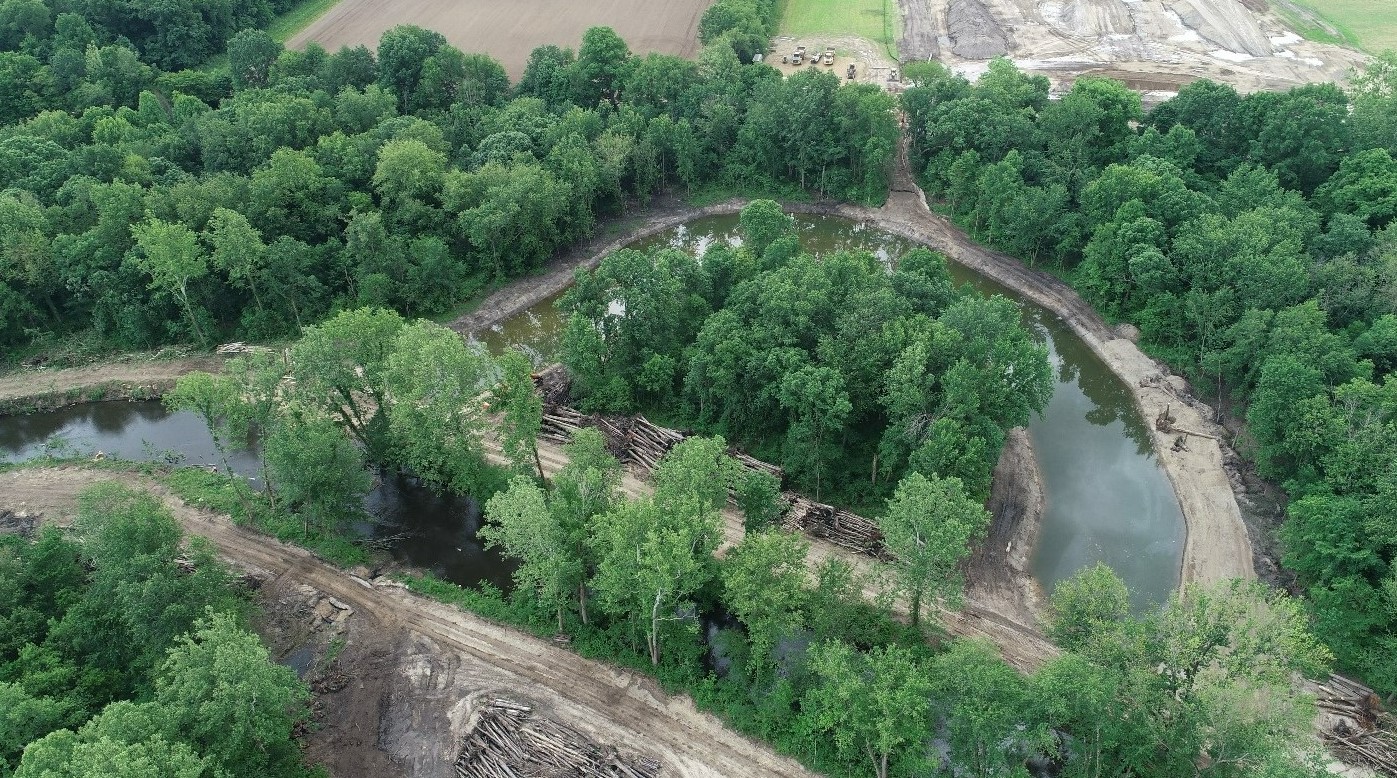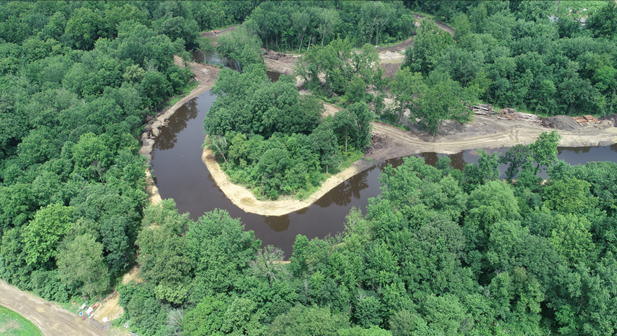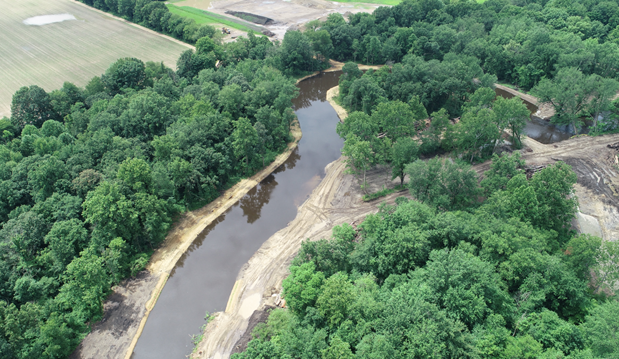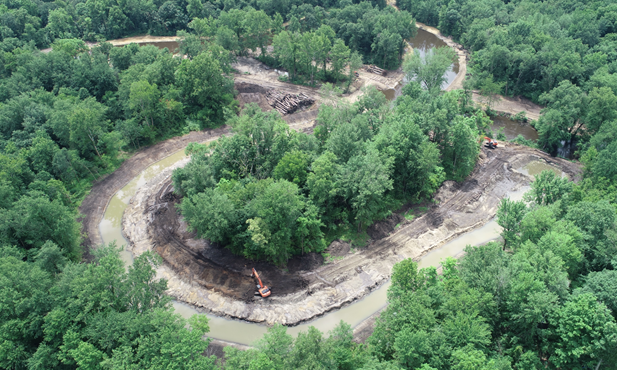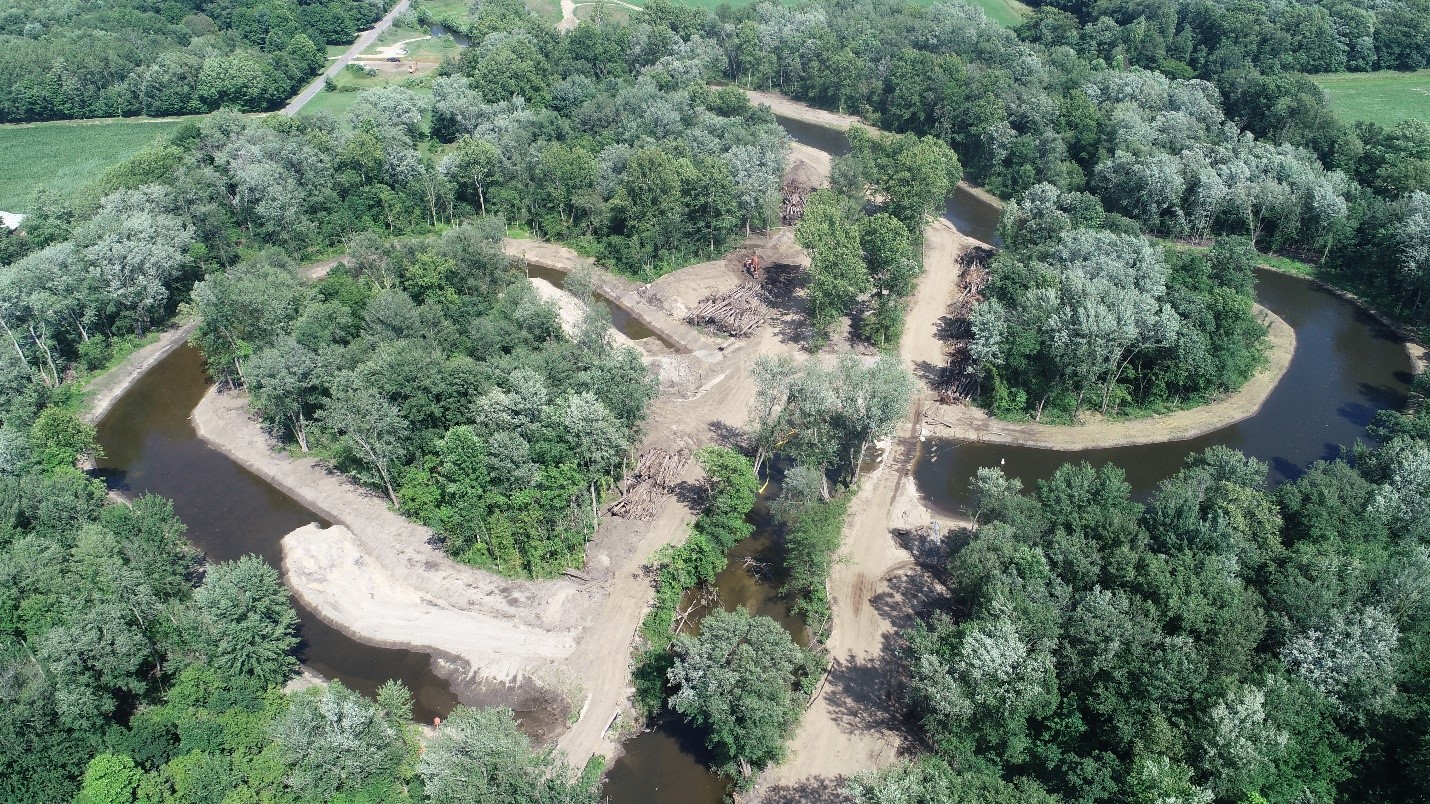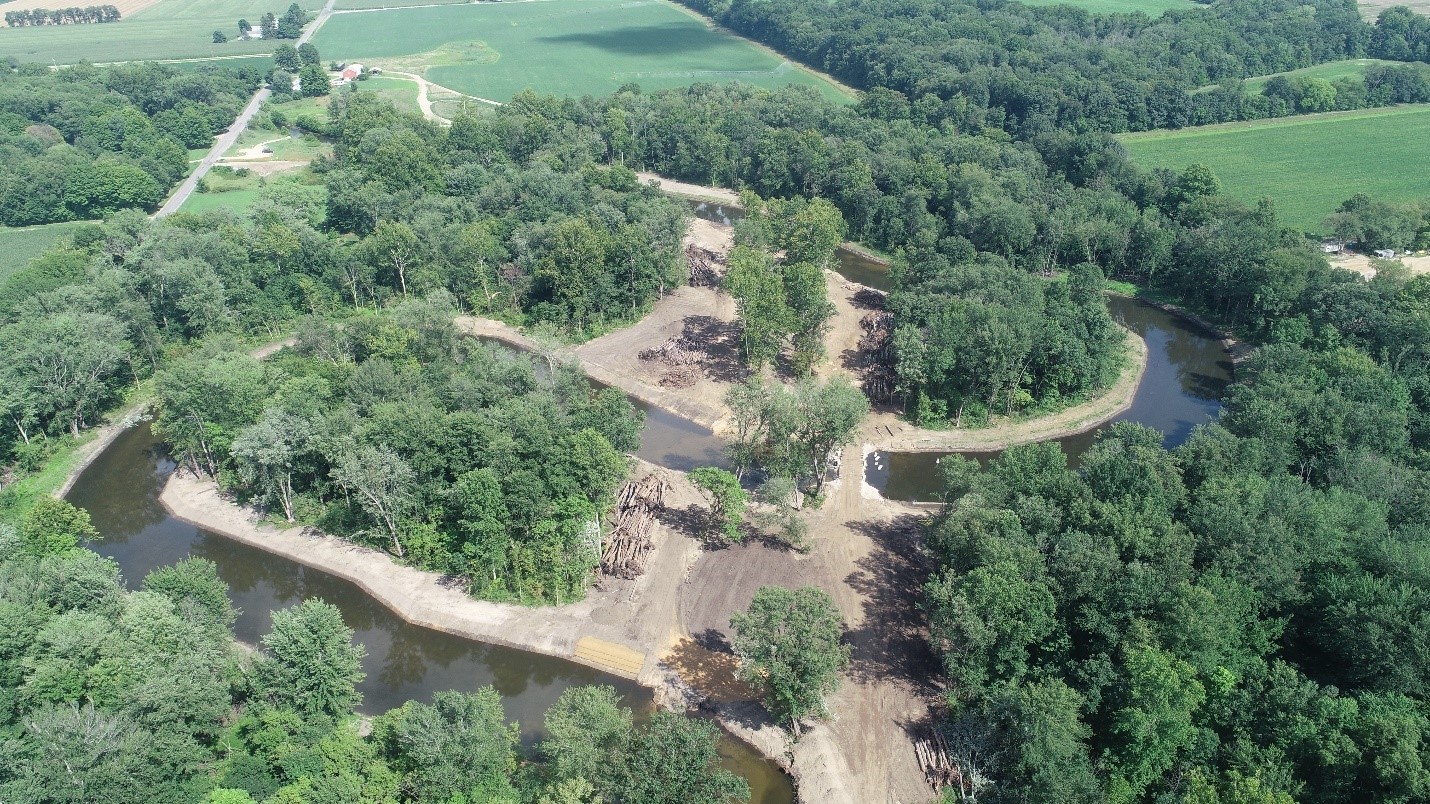Restoring Historic Meanders to the Dowagiac River
The Dowagiac River that you see today is not the Dowagiac River of historic times. The Dowagiac River used to be a sinuous, winding river as it moved through the land. In the early 1900s the river was dredged and straightened to drain, what was referred to at the time as, the swampland, which was seen as a hinderance to progress. Unfortunately, the dredging of the river resulted in the river being disconnected from the floodplains, due to digging the riverbed to a lower elevation and placing the dredging spoils on either side of the straightened river. The river lost half of its length during this time. The areas referred to as swamplands were home to many species of wildlife and plants, as well being a natural filtering system that helped keep the waters clean and healthy. Over a decade ago the Pokagon Band began exploring the possibility of restoring a section of the Dowagiac River adjacent to tribal properties in Dowagiac, Michigan.
This process consisted of determining if it was feasible to restore the historic meander bends to the Dowagiac River without causing a negative impact to surrounding lands during flood events. The restoration was deemed feasible and after a decade of surveys, analyses, research, permitting, and funding acquisition, the restoration of meanders to a section of the Dowagiac River has begun. In February 2022 a small blessing ceremony was held to let the spirits know that the restoration was beginning in March and that, in the long-term, the restoration would benefit the plants, wildlife, and greater community once complete. The restoration is being completed in two phases, with phase two beginning once enough funding is secured. Once both phases are complete, the Dowagiac River in this section will double in length to 1.29 miles and hydrologic functioning will be restored to approximately 53 acres of wetlands. Given future climate scenarios, the restoration adds resiliency to the riverine system and helps prevent flooding to neighboring properties. Follow the progress of this historic restoration on Pokagon Band DNR’s Dowagiac River Restoration Progress webpage. You can search Dowagiac River Restoration Progress on the main website to find our page.
The Restoration Process:
- Create access roads, clear trees, and remove trees with rootwads. Set up soil erosion and sediment control protection measures.
- Continue clearing trees and shrubs. Monitor soil erosion and sediment control measures.
- Count and pile trees with rootwads for re-use.
- Excavate old meander bends.
- Create cribwalls using trees with rootwads to divert the Dowagiac River into new meander bends.
- Create banks using trees with rootwads, fabric, live stakes, seeding, and revetement.
- Divert Dowagiac River into meander bends.
- Begin restoration of area with native plants, trees, and shrubs.
Funding for the project was provided by:







NEW CLOSURE ORDER (October 23, 2023)
Hunting, Fishing and Gathering (Dowagiac River Re-Meander Project)
On October 23, 2023, through Resolution No. 23-10-23-05, the Tribal Council approved this Closure Order. In accordance with Section 2.04(h) of the Code: (1) this Closure Order shall remain in effect until further action by the Tribal Council; and (2) DNR shall cause the Tribal Council to review this Closure Order at least once annually.
This Closure Order applies to the: (1) 29-acre area depicted in Figure 1 (“Closure Area 1”); and (2) 43-acre area depicted in Figure 2 (“Closure Area 2”). Accordingly, while this Closure Order remains in effect, no person shall hunt, fish, or gather in Closure Area 1 or Closure Area 2.
Reasons:
The Dowagiac River Re-Meander Project (“Project”) seeks to restore historic meander bends to the Dowagiac River located on Pokagon Band land, and Project related activities continue within the Closure Area. This Closure Order is necessary to help ensure public safety within the Closure Area
for the duration of the Project.
